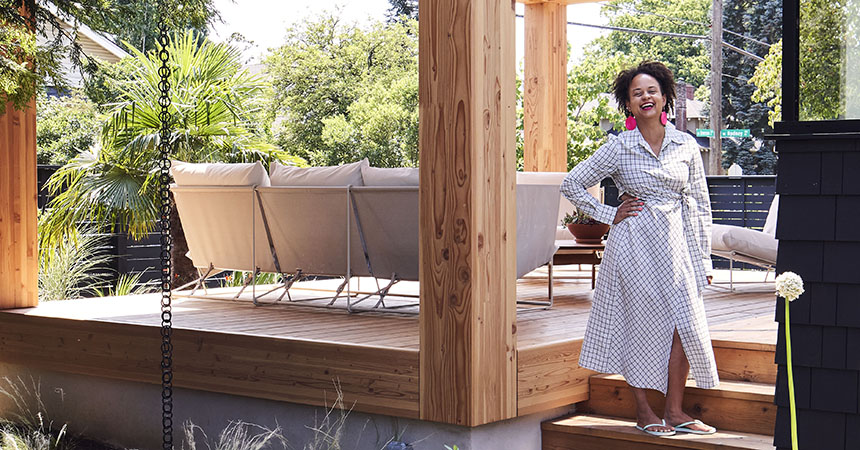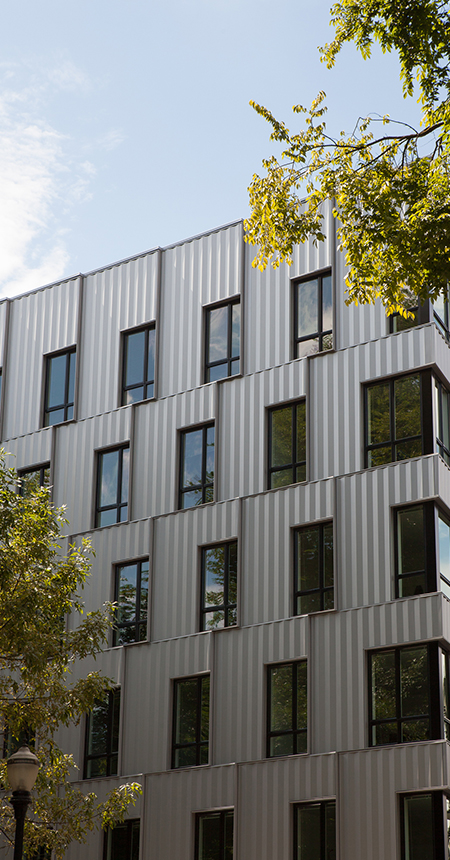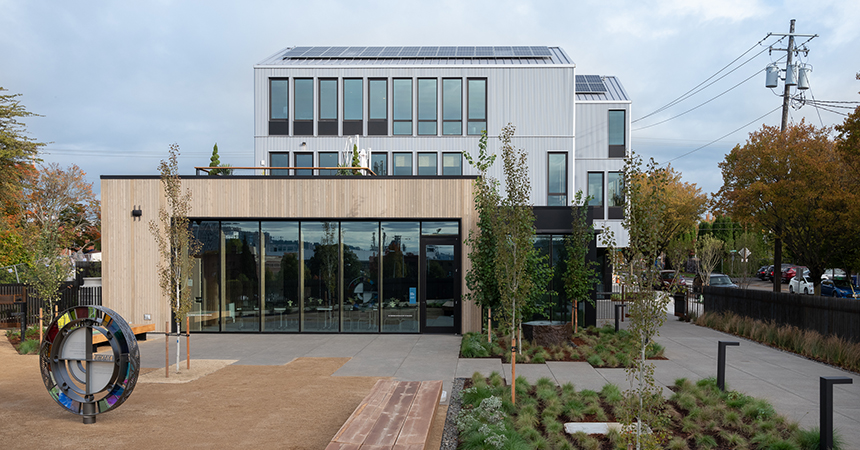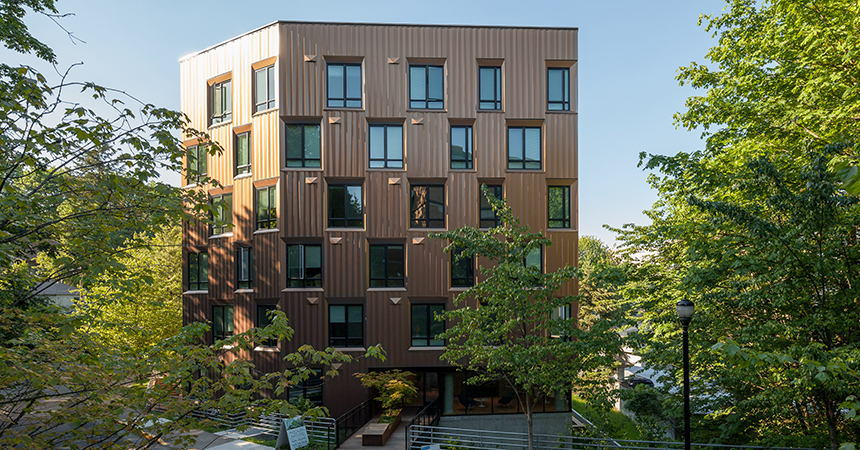
There are some amazing women conquering historically male-dominated fields like commercial development and design, and we thought it was time you met some of them. Welcome to the first in a series of interviews with the women who inspire us every day.
Anyeley Hallová is the founder of Adre, an equity-centered real estate development firm based in Portland. At Adre, Anyeley lives out her passion to shape the built environment in ways that respect our natural environment—with a specific focus on creating wealth for the Black community. She has received accolades for her work from the Urban Land Institute, the Portland Business Journal and the Daily Journal of Commerce.
Anyeley shares her professional expertise and community-centered approach with public policy makers and peers at the local, state and national levels by serving on several government and nonprofit boards. She was recently appointed to the U.S. Green Building Council Board of Directors and is vice-chair of the Oregon Land Conservation and Development Commission.
Q: Can you describe your work?
I’m the founder of Adre, a development company with equity at its center. Every project we take on seeks to create higher prosperity for people who have traditionally lacked access to real estate ownership and investment. Before launching my own company this year, I was a partner with project^, which similarly is very intentional with its work focusing on design and sustainability.
Since my career brought me to the Portland area, I don’t remember Energy Trust of Oregon ever not being part of a development. With each new building, I’ve always made it a priority to try new things. How can the space be more sustainable? Can I add a green roof or an electric vehicle charging station? How can we be more innovative? That of course comes with cost, which Energy Trust helps navigate.
One of the most recent examples is the new headquarters for Meyer Memorial Trust, an organization that invests in programs to create a more equitable Oregon. Through the organization’s investment in sustainable design, the building uses far less energy and water. It’s made from sustainably sourced wood that also captures carbon and its construction supported dozens of local businesses, with 47% of the construction by businesses owned by women and people of color.
Q: Why is sustainability central to your career?
When I was a kid, I lived in northern Nigeria near the edge of the Sahara Desert and at a young age saw how fragile our environment can be and the effect it can have on our wellbeing. The region dealt with, and is still dealing with, crises such as desertification due to water shortages and deforestation. Living in south Florida as well, I saw how sprawl and demand for fresh water resources was changing the environment and harming coastal areas and the Everglades.
So, I’ve always understood the importance of sustainability. But when I began my career in landscape architecture, I really learned how buildings contribute to climate change. After having real estate developers as clients and seeing that they really make the decisions on how sustainable these new buildings were going to be, I made the switch.
Q: What are the biggest challenges you’ve faced in advancing sustainability efforts in your field?
Reaching the highest levels of sustainability and efficiency while still being cost-effective is always the challenge. So, it will take leaders to push policy and the entire industry toward a more sustainable future. Incorporating efficient design and renewables must be done at scale for us to reach our collective environmental goals. That’s where government can come in and help make it easier and more affordable to achieve.
 Q: What changes have you seen, or expect to see, in your industry as a result of the COVID-19 pandemic?
Q: What changes have you seen, or expect to see, in your industry as a result of the COVID-19 pandemic?
We’re already seeing a much bigger focus on indoor air quality, which has long been overlooked in this industry. I’m glad to see developers looking more closely at fresh air intake and things like the level of MERV and HEPA filtration and purification systems because it is so important for our health. My hope is that after COVID-19, every building and owner will have a sense of the quality of their air.
Q: What excites you most about the future of your work?
An R&D project I’ve been proud to work on is Framework, which conducted the research and testing needed to prove out the technology to allow for high-rises made from wood in the U.S. I am looking forward to the future of the mass timber industry in Oregon and projects that source regionally harvested timber to support underserved areas of rural Oregon and address climate change through carbon sequestration.
I’m most excited about growing an understanding in our community of how equity and sustainability can work together. As a developer, it’s so important to find the balance and ask yourself, “Who’s benefitting from this project? Is it bringing jobs to a region that needs jobs? Is it bringing affordable housing?” As we move forward in any industry, especially in development, we must bring along those who have been historically marginalized.
I also appreciate the work of groups like Your Street, Your Voice, which introduce young people to the development, design, and construction industries and empower them to use design thinking as a tool for social justice.
Q: What is your advice to women entering your field?
Keep pushing. People often don’t necessarily think you can do whatever you’re doing. It’s not a given that you’re an expert or a leader in your field so you have to reestablish yourself in every project and every team. Don’t give up and push through those boundaries. I make a point to work with people who respect me and value all team members. We should require that in any work environment.
Sometimes organizations put the burden of change on the individual employee rather than making changes to institutional or company culture; this can become extremely tiring for women employees. Stop Telling Women They Have Imposter Syndrome reminds us that the end goal isn’t to fix individuals. It’s to create a workplace where everyone is equally valued professionally and where diversity is seen as an asset.


